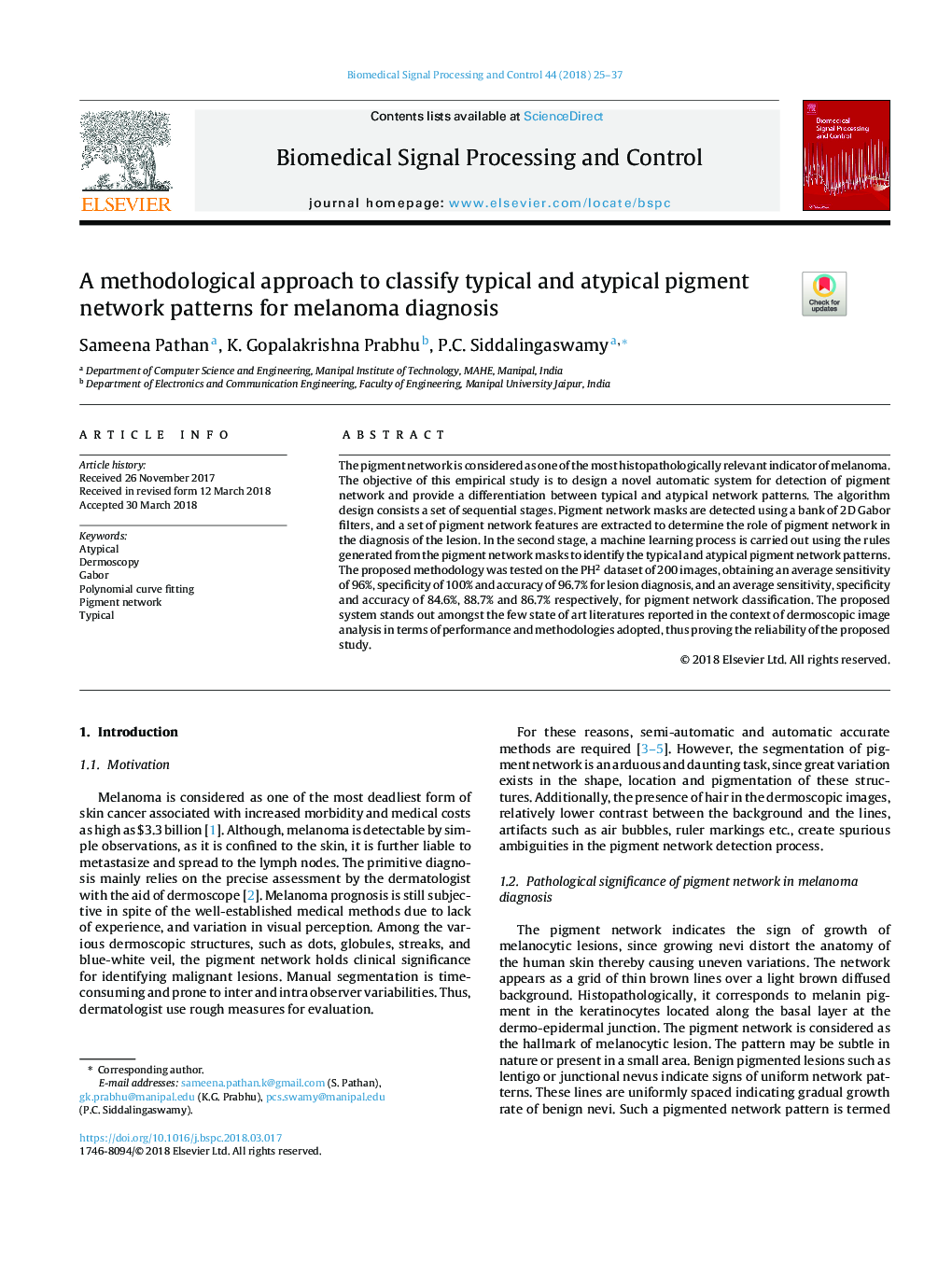| Article ID | Journal | Published Year | Pages | File Type |
|---|---|---|---|---|
| 6950757 | Biomedical Signal Processing and Control | 2018 | 13 Pages |
Abstract
The pigment network is considered as one of the most histopathologically relevant indicator of melanoma. The objective of this empirical study is to design a novel automatic system for detection of pigment network and provide a differentiation between typical and atypical network patterns. The algorithm design consists a set of sequential stages. Pigment network masks are detected using a bank of 2D Gabor filters, and a set of pigment network features are extracted to determine the role of pigment network in the diagnosis of the lesion. In the second stage, a machine learning process is carried out using the rules generated from the pigment network masks to identify the typical and atypical pigment network patterns. The proposed methodology was tested on the PH2 dataset of 200 images, obtaining an average sensitivity of 96%, specificity of 100% and accuracy of 96.7% for lesion diagnosis, and an average sensitivity, specificity and accuracy of 84.6%, 88.7% and 86.7% respectively, for pigment network classification. The proposed system stands out amongst the few state of art literatures reported in the context of dermoscopic image analysis in terms of performance and methodologies adopted, thus proving the reliability of the proposed study.
Related Topics
Physical Sciences and Engineering
Computer Science
Signal Processing
Authors
Sameena Pathan, K. Gopalakrishna Prabhu, P.C. Siddalingaswamy,
